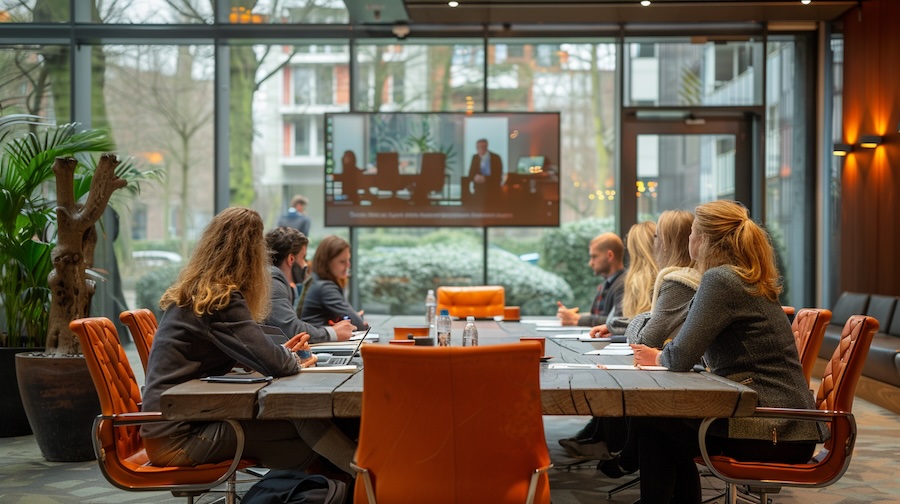First of all, before reading this “KA2 Projects Preliminary Work” post, please check “Innovative KA2 Project Ideas” to understand the KA2 project writing process. Because, it will be time-saving to create a preliminary work document; you can create your own or use our template here. This post will show you how to do initial work before writing the project. We also have a Udemy Course on how to write KA1 Projects, which you may be interested in. This post concerns creating practical preliminary work before writing a KA2 project.
Table of Content
- Research
- Priorities
- Primary and Secondary Target Groups
- Aim and goals
- Work Packages (WP)
- Partners
- Timeline and Budget
- Results and Outputs for each WP
- Indicators of Success for each WP
- Impact
- Conclusion
KA2 Projects Preliminary Work: Research
As mentioned above, we suppose you have already read the “Innovative KA2 Project Ideas” blog post, and you decided on the topic of your project. Also, we presume you have already selected which priorities your project covers.
Definitions and Terminology
It is crucial to inform experts who will read your project proposal about its topic’s key definitions and terminology. Use this information inside the related questions in the application form.
KA2 Projects Preliminary Work: An analysis of the current situation
You need to take a photo of the current situation of the project topic. Use statistics and citations from others’ articles. Adding links and taking the most critical parts of the text you decide to use in your project proposal is a good idea. All of these will be inside the Research part of our template.
Priorities
Erasmus+ KA2 Projects has horizontal and sector-specific priorities that you can find 2023 Program Guide on pages 217-225. Since you already know your project topic and selected your sector, focus on the priorities that fit with your project idea
KA2 Projects Preliminary Work: Horizontal
There are four horizontal priorities, and you must select at least one to fit your project idea. Copy it from the Program Guide and paste it to our template under horizontal priority. Our practice is to use font size eight and font Helvetica. After you paste it into the template then, it is time to select the fittest parts by marking their background yellow. Then your manager quickly understands which features you are using.
KA2 Projects Preliminary Work: Sector-Specific
Repeat everything you did in the horizontal priority part, but this time for the priorities that you choose from the sector (VET, Youth, Schools, HE, Adult)
Explain which activities in your project cover these priorities.
For yellow details, you will need to explain which activity of the project you cover that part of the priority. You may change your activities to fit those priorities.
Similar to below;
Horizontal priority
explain
Sector-Specific priority
explain
Horizontal Aspects (Program Guide Page)
Horizontal aspects to be considered when designing your project:
In addition to complying with the formal criteria and setting up sustainable cooperation arrangement with all project
partners, the following elements can contribute to increasing the impact and qualitative implementation of
Cooperation Partnerships throughout the different project phases. Applicants are encouraged to take these
opportunities and dimensions into account when designing Cooperation Partnership projects.
Inclusion and Diversity
The Erasmus+ Programme seeks to promote equal opportunities and access, inclusion and fairness across all its actions.
To implement these principles, an Inclusion and Diversity Strategy155 has been devised to support a better outreach to
participants from more diverse backgrounds, in particular those with fewer opportunities facing obstacles to participate
in European Projects. Cooperation partnerships are especially suitable to work on inclusion and diversity as the subject
of the project, further developing inclusive and diversity-sensitive practices and methods, in accordance with the
corresponding policy priority for the action. Also, independently from the thematic of their projects, organisations
should design accessible and inclusive project activities, taking into account the views of participants with fewer
opportunities and involving them in decision making throughout the whole process.
Environmental sustainability
Projects should be designed in an eco-friendly way and should incorporate green practices in all its facets.
Organisations and participants should have an environmental-friendly approach when designing the project, which will
encourage everyone involved in the project to discuss and learn about environmental issues, reflecting about what can
be done at different levels and help organisations and participants come up with alternative, greener ways of
implementing project activities.Digital dimension
Virtual cooperation and experimentation with virtual and blended learning opportunities are key to successful
Cooperation Partnerships. In particular, projects in the field of school education and adult education are strongly
encouraged to use European School Education Platform (including eTwinning), or the adult learning platform EPALE to
work together before, during and after the project activities. Projects in the field of youth are strongly encouraged to
use the European Youth Portal and the European Youth Strategy Platform.2023 Erasmus+ Programme Guide (Page: 230-231)
Participation and civic engagement
The Programme supports participation and active engagement throughout all its actions. Cooperation Partnership
projects should offer opportunities for people’s participation in democratic life, social and civic engagement. The focus
will also be on raising awareness on and understanding the European Union context, notably as regards the common
EU values, the principles of unity and diversity, as well as their cultural identity, cultural awareness and their social and
historical heritage.
You need to write this part very short because of the character limitation of the application form. Use headers like following;
Horizontal aspects
Inclusion: explain
Green: explain
Digital: explain
Participation: explain
Primary and Secondary Target Groups
The primary target group is directly affected by your project activities; meanwhile, the secondary target group is indirectly affected by it. Decide your primary and secondary target groups and write them in the related part of the template.
KA2 Projects Preliminary Work: Need Analysis
Research to understand the target group’s needs relating to your project topic. You will use it in the application form.
Associated Partners (vital for each organisation)
Last year the EU experts gave a lot of attention to the associated partners. For each of your partners, ask them to provide the associated partner’s name and a short description relevant to the project topic. If you put them, you will gain many points and may avoid the proposal’s failure.
An associated partner is a (VET) school if you propose a (VET) school project. Or it may be a youth organisation if you offer a project for the youth sector. An adult-related organisation if your sector is adult.
Aim and goals
In general, instead of project Aim and Goals, some people use Overall Objective and Specific Objectives. How to create them watch the video in our how-to-write KA1 Projects Udemy Course. If you are a fewer opportunity young people you can contact us to get it for free.
Work Packages (WP)
WP1 is always Project Management and Coordination, and WP5 is Dissemination according to our projects. Use at most five WPs. It may be less; four is okay, but since you save two work packages for Management and Dissemination. Under WP titles, decide sub-activities as;
WP3 – Title
3.1 – Sub-activity 1
3.2 – Sub-activity 2
and continue on for all your WP
KA2 Projects Preliminary Work: Partners
Selecting proper partners is vital for Erasmus+ KA2 projects. Your proposal will only succeed if you choose them accordingly.
Relativeness of the partners (vital)
Correspondingly, having a grant is only possible if your partners are related to the project topic. Also, you need to provide related partners. Their Partner Identification Form (PIF) need to cover the project topic. Their daily work should be your project topic.
KA2 Projects Preliminary Work: Questionnaires for partners
Before going further, ask partners questions about the application form after you send them the project’s concept note. And ask them to answer the below questions.
Questionnaires:
Firstly, 1 – Project Description Q2: Please outline the target groups of your project:
Who are the participants?
Where are they come from? And detail about their profile.
What are their needs?
What is the current situation in your country related to the project topic?
Secondly, 2 – Project Description Q4:
How does the project address the needs and goals of your organisation and the identified needs of their target groups?
Thirdly, 3 – Cooperation Arrangement Q2:
What strengths will you, as a partner, bring to the project?
Fourthly, 4 – How is this project complementary to other initiatives already carried out by the participating organisations? If there is any.
Fifthly, 5 – Follow up Q2:
Do you plan to continue using the project results or implement some activities after the project?
Sixthly, 6 – Follow up Q3:
Who are the stakeholders by name?
Are there other groups or organisations that will benefit from your project? Please explain how.
Lastly, 7 – Who are your Associated Partners?
Name, short brief, if you ask them to give you a letter of intent, it would be much better.
Timeline and Budget
Before calculating the budget, create a project timeline (a Gantt Scheme.) Consequently, employee hourly rates are free now, beginning from the new Program. So that, we multiply them by 35% related to previous terms. At this point, according to our projects, we will set them as follow for a researcher.
Firstly, for countries like; Bulgaria, Estonia, Croatia, Latvia, Lithuania, Hungary, Poland, Romania, Serbia, Slovakia, The Republic of North Macedonia, Turkey
Instead of 74 EUR/day for a researcher, we set 100 EUR/day.
Secondly, For countries like; Czech Republic, Greece, Spain, Cyprus, Malta, Portugal, Slovenia
Instead of 137 EUR/day for a researcher, we put 185 EUR/day.
Thirdly, for countries like; Belgium, Germany, France, Italy, Finland, Iceland
Instead of 214 EUR/day for a researcher, we selected 290 EUR/day
Finally, for countries like; Denmark, Ireland, Luxembourg, Netherlands, Austria, Sweden, Liechtenstein
Instead of 241 EUR/day for a researcher, we set 325 EUR/day.
You can increase your budget for others using the same rate accordingly.
Results and Outputs for each WP
Above all, use the timeline and sub-activities to create results, outputs, and outcomes for each WP. The results should be something like the following;
Results
First of all, Check each sub-activity in the work package if there are any outputs, results then write them like below
WP1
Result 1.1
Result 1.2
etc.
And so on for other WPs
WP2
Result 2.1
Result 2.2
etc.
Indicators of Success for each WP
Similarly, like creating results and outputs for each WP, this time you will use results to check if you can create any indicator of success for them.
KA2 Projects Preliminary Work: Impact
What is the long term impact of your project? Write them as Impact 1, Impact 2, Impact 3, etc.
Conclusion
In conclusion, you can learn a lot from our how-to-write KA1 Projects Udemy Course. But, you do not need to buy this course if you are a fewer opportunity young people, you can contact us to get it for free.
Meanwhile, you learned how to create a KA2 Projects Preliminary Work document.
It is the first step of preliminary work; if you are a Junior, you only do the priorities part before you go further. If your manager approves, then continue to other parts.















